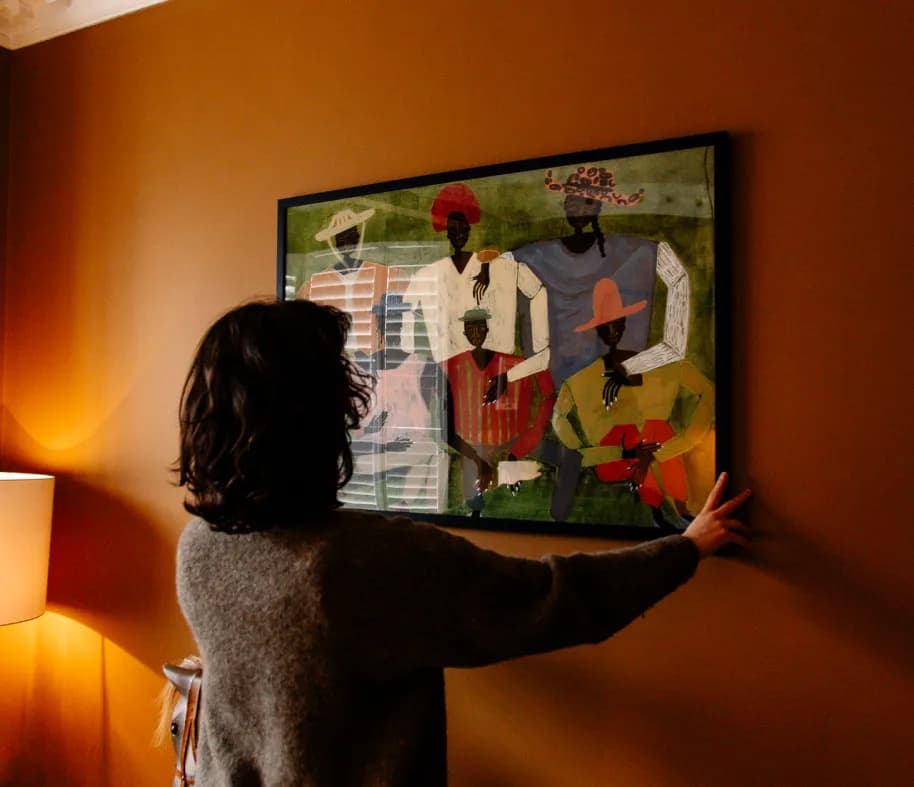In conversation with... Roman Robroek
Photographer Roman Robroek takes us deep into the forgotten corners of the world—abandoned buildings, silent cities, and spaces steeped in history. In this conversation, he shares how a love for exploration and storytelling drives his work, why he left full-time photography to rediscover his creative joy, and how each image captures not just decay, but memory, beauty, and a quiet sense of presence.
Written by: Nick (GoodMood)

Nick (GoodMood): Roman, it’s so lovely to have you as part of the GoodMood community. Let’s start from the beginning—can you tell us a bit about yourself and what you do?
Roman: Thanks so much. My name’s Roman Robroek, and I’m a photographer currently based in Portugal—though I’ve moved around quite a bit! I’ve been here for about five months now, but before that I lived in the Netherlands for two years and travelled across Europe for about four.
My work focuses on photographing abandoned buildings. I’m fascinated by documenting the past—searching for these places, learning their histories, and capturing them in a way that preserves their story.
Nick: Which came first—your love of travel or the photography of abandoned spaces?
Roman: The buildings, definitely. I’ve been doing this for nearly 15 years. In the early days, I was living a more traditional life—relationship, mortgage, job, pets. But after a big life change, I sold the house, left my job, and decided to chase my dream of travelling and photographing full time.
Nick: And was photography something you were already doing professionally?
Roman: Not quite—it was always a side hustle. For the first 10 years I did it alongside my day job. Eventually, I released a book, started getting international projects, and for a few years, I went full time. But I realised doing it professionally changed how I approached it. I started thinking about what would sell, not what inspired me. So I went back to part-time work in IT, and now photography is a creative outlet again—something I do purely for the love of it.
Nick: Your photos often feel calm and optimistic, despite showing places that are crumbling or abandoned. Is that intentional?
Roman: That’s a great observation. I think part of that comes through in my editing—I like to brighten things slightly and enhance colours. But also, when I’m in those spaces, I feel calm and deeply connected. I want that to come through. It’s not just decay—it’s memory, silence, atmosphere. I want to share that sense of peace with others.
Nick: Are there any standout projects that mean the most to you?
Roman: A few come to mind. One was in Beirut, Lebanon—a year after the port explosion. I was commissioned to document the architectural damage. It was a powerful experience, very emotional, but also incredibly meaningful. Another was in Nicosia, Cyprus, where I was granted access to photograph buildings in the UN buffer zone. And then there’s Abkhazia, near Georgia—very remote and tense. I was even held at gunpoint there, which I don’t recommend! And of course, Chernobyl was unforgettable—walking around a completely deserted city.
Nick: That’s intense. Does editing those images bring back the emotion of the moment?
Roman: Definitely. The editing process is almost like reliving it. I can feel how I felt at the time. Sometimes that comes through in the image—my Chernobyl series is a little darker, and my Abkhazia photos feel more distant. It’s not just about what I saw, but what I experienced.
Nick: How does it feel seeing your work in someone else’s space—on their wall?
Roman: It’s a huge honour. When someone buys a print and sends me a photo of it hanging in their home, it’s incredibly rewarding. It means that piece of forgotten history lives on. That’s powerful.
Nick: Do you have your own photos hanging up?
Roman: Not in my current place—I’m in an Airbnb—but yes, back in the Netherlands. Even at my part-time job, they have several of my works on the office walls. It’s really cool to see.
Nick: Do you think your work looks better big?
Roman: Yes, for sure. I love seeing my work printed large—between a metre and a metre and a half. The detail, the atmosphere, it just translates better. Small prints don’t quite do these spaces justice.
Nick: What’s next for you—any trips planned?
Roman: I’m heading to the north of Portugal in a few weeks. I’m currently in the south where there aren’t many shoot-worthy places, but the north is full of stunning architecture. I’ve already mapped out tens of buildings I want to explore.
Nick: And for aspiring photographers—what advice would you give?
Roman: Shoot as much as possible. Edit as much as possible. Share your work. Ask for feedback. And eventually, shoot what you love—not what you think will sell. Once I stopped shooting for money and started shooting for joy, the creativity and income both came back.
Nick: Are you optimistic about the future of photography, especially with AI coming into the mix?
Roman: Yes, I am. I see AI as a tool, not a threat. It helps with editing—like removing distractions—but it doesn’t replace the experience of being in these places. I love the dust, the silence, the realness of it all. AI can’t replace that, but it can support it.
Nick: That’s a brilliant outlook. Roman, thank you so much for this conversation—it’s been a joy.
Roman: Thank you! I loved chatting. Looking forward to seeing how it all comes together.



